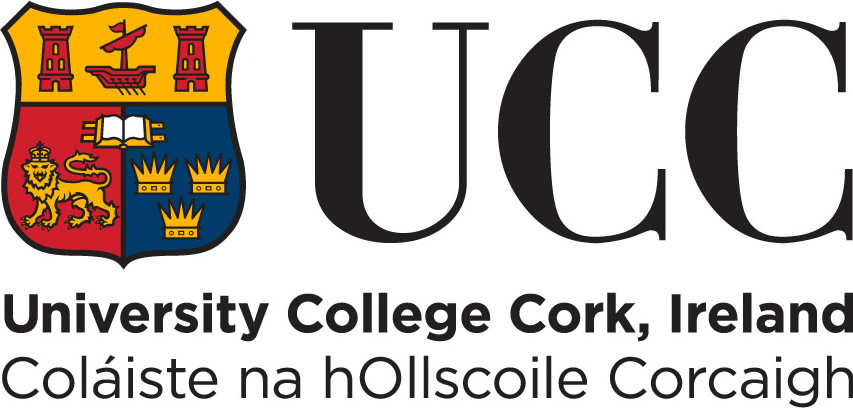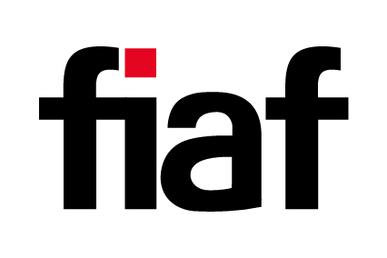Film Policies in Transition: Globalization, Digitization, Protectionism
Gertjan Willems
In November 2016, the International Journal of Cultural Policy published a special issue on “Film Policy in a Globalised Cultural Economy” which focused on policy responses to recent changes in the economic and technological contexts of filmmaking practices worldwide (Hill and Kawashima). To mark the publication of this special issue, editors John Hill and Nobuko Kawashima joined forces with contributor Paul McDonald to organise a symposium on Film Policies in Transition: Globalization, Digitization, Protectionism, which was held at King’s College London on 2 June 2017. This symposium, however, was not just a presentation of the published articles, but instead explored the issues raised in the journal (such as digitisation, accelerating globalisation, protectionism, new technologies and economic and cultural developments) in further detail and for different geographical contexts.
As such, only the first invited speaker also appeared as an author in the journal issue. In his keynote talk, chaired by Paul McDonald (King’s College London), entitled “Global Film Policy: The Turn to Labour”, Michael Curtin (California, Santa Barbara) departed from his eye-opening article on the emergence of a global production infrastructure that favours producers and media conglomerates at the expense of screen media workers. Current film policy worldwide is predicated upon the assumption that developing world-class facilities (such as those in Budapest, Dubai, Singapore and Wellington) will result in economic investment and job creation. However, relatively little attention has been paid to the kind of labour and labour conditions that this may involve. Curtin made a convincing plea to give labour issues a more prominent place in the contemporary film policy agenda. Recently, more than 96% of the voting members of the Writers Guild of America supported a strike against production companies. Once again, this made clear that there are several critical labour issues at stake in filmmaking practices. Some of the most prominent ones are stagnant pay, overtime, “crunch time”, job security, working conditions, healthcare and retirement.
The question is, of course, how to address these labour issues by means of film policy. Curtin draws inspiration from environmental studies and advances the concept of “stewardship” (which relates to finding a balance between private and public values within a context of market failure) as a possible approach to the challenges of media globalisation. During the discussion following Curtin’s talk, it became clear that policy answers will always have to be introduced in two ways: by structural/organisational agreements and by mobilising people on the ground in order to address what Mette Hjort later referred to as the gap between institutional thinking and social realities. At the same time, the question arises whether there is a need for a specific labour policy for the film industry, or whether these are more general labour issues calling for a transindustrial response. Either way, the answer will at least need to be transnational.
This relates to the question of globalisation, one of the topical issues in film policy discussions since the 1980s. The panel “Globalisation and Regionalisation”, chaired by Nobuko Kawashima (Doshisha and Tokyo), focused on this issue from an Asian perspective. In her paper “Cultural Flows and the Global Film Industry: A Comparison of Asia and Europe as Regional Cultures”, Diana Crane (Pennsylvania) examined recent film production and consumption flows within the regions of East Asia and Western Europe respectively. Based on 2014 box-office and production data from the European Audiovisual Observatory and Box Office Mojo, Crane observed that cultural flows of films among countries in these regions are almost nonexistent. American blockbusters and national films tend to predominate in the box office lists but coproductions can also be significant in selected countries.
China, in particular, regards coproductions as a strategy to strengthen its position in selected regions. Coproductions involving the industries in China and Hong Kong have been an important strategy in the audiovisual translation of the “mainlandisation” trend in Hong Kong. Darrell William Davis (Lingnan) analysed this sociopolitical assimilation of Hong Kong into China in his paper “Two Systems Differential: Informal Media and Decolonization in Hong Kong”. The issue of mainlandisation in Hong Kong and coproductions with China was further investigated by Emilie Yeh Yueh Yu (Lingnan) in her paper “The Policy and Economy of Co-productions: Hong Kong Cinema in the China Market”. The first part of her presentation focused on the political economy of coproductions between Hong Kong and mainland China. Yeh Yueh Yu insightfully demonstrated how the somewhat paradoxical principles of China’s current film policy are protectionism (against Hollywood) and triumphalism (leveraging its market size by inviting coproductions). Regarding Hong Kong, the Chinese mainland and Hong Kong’s Closer Economic Partnership Arrangement (CEPA) was an important policy tool leading to a rise of coproductions. Furthermore, Yeh Yueh Yu investigated the mainlandisation of Hong Kong cinema by focusing on the performance of films by a number of directors, such as Tsui Hark, Stephen Chow, Peter Chan, Wong Jing, and Wong Kar-wai. Using as an example Tsui Hark’s The Taking of Tiger Mountain (2014), based on a famous opera from the time of the Cultural Revolution, Yeh Yueh Yu argued that Hong Kong’s engagement with China’s market does not necessarily bring homogenisation and assimilation to a Chinese state-oriented cinema.
The second panel of the symposium, chaired by John Hill (Royal Holloway), switched the attention from Asia to Europe. Bill Grantham (Loughborough) kicked off by reminding us that it is important to not only look at changes but also at continuities in the film industry. Grantham pointed out that the film industry was already globalised and characterised by vertical and horizontal integration by 1907. Starting from this observation, Grantham provided a historical overview of general economic film policies in the United States and Europe. Gradually turning his focus to the main topic of his paper, “The Tax Break Trap: Hollywood, Britain and the EU”, Grantham ended with a critique of the present fragmented landscape of tax regulations such as tax breaks, cash rebates and tax shelters. He argued that we are now locked into a system whereby countries and regions are constantly adding tax breaks and almost any film is substantially “subsidised”. Grantham found this a problematic situation, but saw no way back. During the discussion, however, it was argued that the absence of tax incentives in Denmark and Sweden indicated that an alternative policy to tax breaks might be possible for some countries.
The predominance of economic discourses in film policies was also addressed by Duncan Petrie (York) in his paper “Small Nations or Global Hubs? Opportunities and Challenges for Film Policy in Scotland and Ireland”. Petrie turned his attention to the peculiarities of small film-producing nations, which are challenged by an increasing globalisation that favours large and powerful players. In his comparison of the policies of film institutions in Scotland (Creative Scotland), Northern Ireland (Northern Ireland Screen), and the Republic of Ireland (Irish Film Board), Petrie noted that, while these are marked by an emphasis on growth and inward investment by way of tax incentives, location services and other inducements, cultural and national concerns continue to feature as significant—if contested—markers within policy discourses
As shown by Mette Hjort (Copenhagen) in her paper “Ethnic Diversity and Gender Equity as Goals for the Film Industry: What are the Policy Implications, Especially in the Context of Small Nations?”, cultural discussions are also paramount in the Danish film policy context. Following on from some controversial statements relating to a regional film fund in 2012, the issue of ethnic diversity acquired an increased profile in the Danish film sector. This resulted in efforts to collect data on ethnic diversity (focusing on new Danes of non-Western origin) in the film texts, behind the camera (meaning people at work in the film industry) and among audiences. As there is an international tendency toward data-driven, evidence-based policy thinking, this was a crucial step for further policy action. The Danish Film Institute (DFI) recently published ethnicity (2015) and gender (2016) reports, which spurred public debate and have been significant in terms of the current policy agenda. Contrary to the Swedish Film Institute, where gender parity is a factor in the allocation of funding for film production, the DFI does not want to “force” diversity requirements. The Danish policy avoids quotas and, rather, asks for a societal commitment to diversity. By means of data collection and raising consciousness about diversity issues, the DFI has sought to make it a project relevant to the entire film ecology.
With topics such as labour conditions, cultural flows, economic production contexts, tax incentives, ethnicity, gender and many others, the issue of diversity proved an important aspect of the symposium. It also confirmed that the field of film policy studies is currently experiencing an upswing. Although Albert Moran’s 1996 anthology Film Policy is still the only academic book that provides a broad overview of the field of film policy studies, there has been a rise in special film policy panels at conferences, the publication of various books and journal articles on film policy case studies, and the publication of special issues of the Nordic Journal of Cultural Policy (Andersson, Sundholm, and Vesterlund) and of the International Journal of Cultural Policy (Curtin). This growth in the field of film policy studies can be linked to what Paul McDonald has described as the “industrialisation” of film studies, or what Mette Hjort has termed the “institutional turn” in film studies (16). In this context, John Hill dedicated his concluding remarks to his hope that this symposium would not be an end point, but would instead strengthen the community of film policy scholars and stimulate future collaborations. As such, the symposium was another meaningful step in establishing film policy studies as a significant scholarly field.
References
1. Andersson, Lars Gustaf, John Sundholm, and Per Vesterlund. “Minitema Om Filmpolitik: Introduction.” The Nordic Journal of Cultural Policy, vol.16, no. 1, 2013, pp. 5–8.
2. Curtin, Michael. “Regulating the Global Infrastructure of Film Labor Exploitation.” International Journal of Cultural Policy, vol. 22, no. 5, 2016, pp. 673–85.
3. Det Danske Filminstitut. “Undersøgelse af Etnisk Mangfoldighed i Dansk Film.” 2015.
4. Det Danske Filminstitut. “Undersøgelse af Kønsfordelingen i Dansk Film.” 2016.
5. Hill, John, and Nobuko Kawashima. “Introduction: Film Policy in a Globalised Cultural Economy.” International Journal of Cultural Policy, vol. 22, no. 5, 2016, pp. 667–72.
6. Hjort, Mette. The Education of the Filmmaker in Europe, Australia, and Asia. Palgrave Macmillan, 2013.
7. McDonald, Paul. “In Focus: Media Industries Studies. Introduction.” Cinema Journal, vol.52, no. 3, 2013, pp. 145–49.
8. Moran, Albert, ed. Film Policy: International, National, and Regional Perspectives. Routledge, 1996.
9. The Taking of Tiger Mountain [Zhì qu weihu shan]. Directed by Tsui Hark, Baidu, 2014.
Suggested Citation
Willems, G. (2017) Report on Film Policies in Transition: Globalization, Digitization, Protectionism (2017) [Symposium]. King’s College London, 2 June. Alphaville: Journal of Film and Screen Media, 14, pp. 235–238. https://doi.org/10.33178/alpha.14.13.
Gertjan Willems is Postdoctoral Fellow of the Research Foundation – Flanders (FWO) at Ghent University. He is also guest professor at the Saint-Louis University, Brussels. His research interests are aimed at a critical analysis film, television, radio, literature, and other forms of media and culture. He has particular research expertise in film policy, the cinema of the Low Countries and the relation between media and nation-building.









